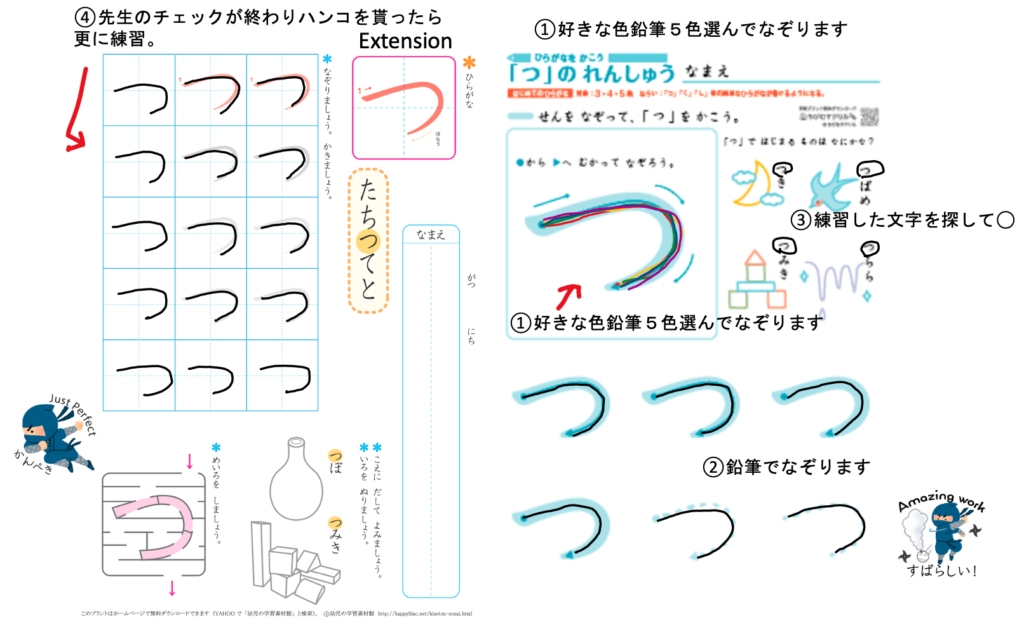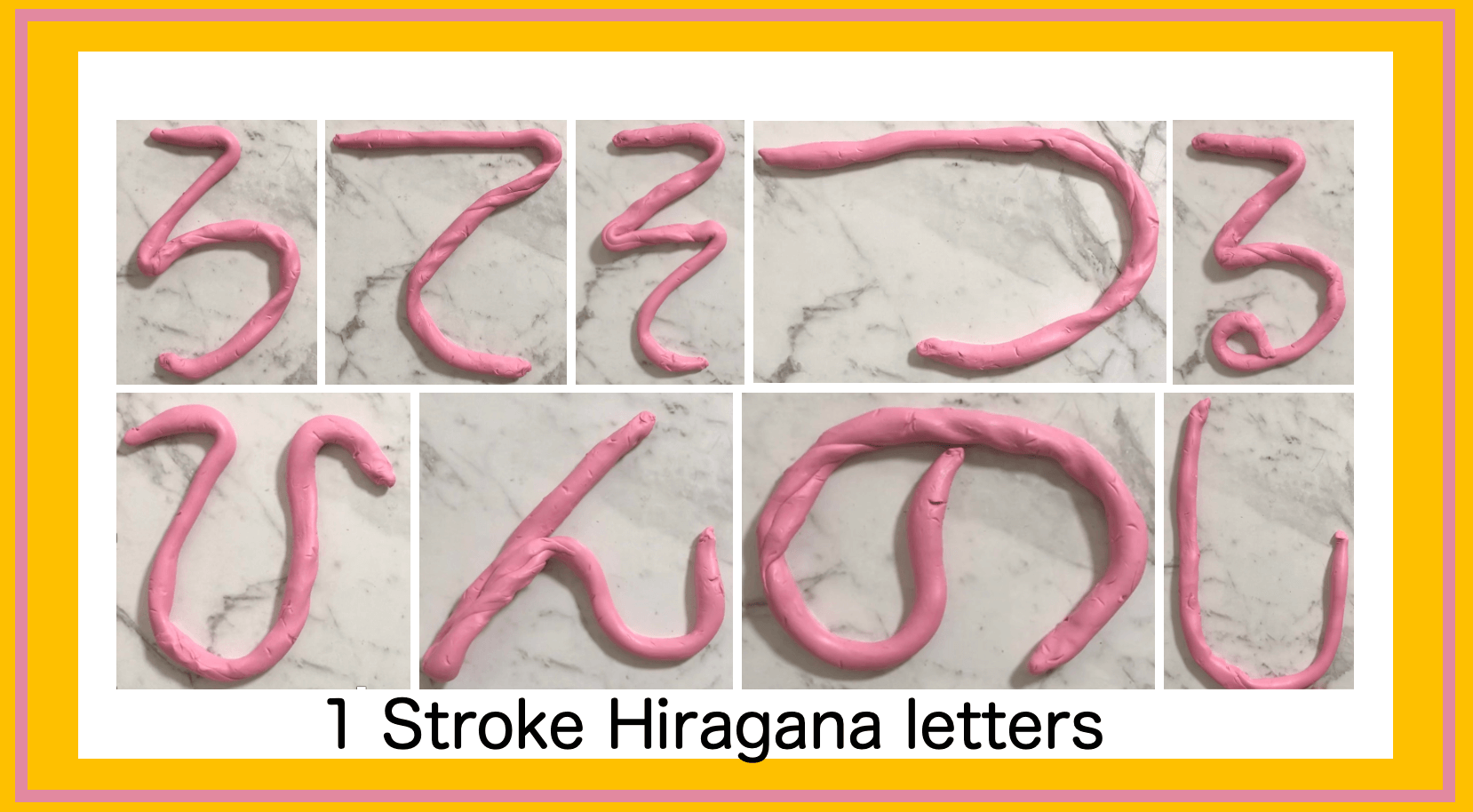タイトル通りですが、日本の子どもにひらがなを教えるのと日本語を知らない海外の小学生にひらがなを教えるのは全く次元の違う話です。As the title suggests, teaching Hiragana to Japanese primary students and teaching Hiragana to non-Japanese background primary students are totally different things.
私が教えるシドニーの小学校では、1年生からひらがなの書きを教えます。その前のキンディーでは1年かけて、ひらがなやカタカナの識字を歌や様々なアクティビィーで学習します。At the primary school in Sydney where I teach, students are taught to write Hiragana from the first grade. Prior to that, students will spend a year in kindergarten learning Hiragana and Katakana letter recognition through songs and various activities.
残念ながら、識字がなんとなくできるからと言って、ひらがなが簡単に書ける訳ではありません。まだまだ、手のスキルが追いつかず、運筆もままならない生徒がたくさんいます。Unfortunately, just because students can recognise letters does not mean they can write Hiragana letters. There are many students whose fine motor skills are still developmental stage, and cannot even make a good stroke.
私がひらがなを教えるときにやはり最重要視しているのは書き順で、バランスが悪くても書き順が正しく書けていたらこの年齢ではOKとします。When I teach Hiragana, the most important thing is the stroke order, and even if the balance is not good, if the stroke order is correct, it is OK at this age.
1年かけて全ひらがなを教えます。1学期には1画、2学期には2画、3学期には3画そして4学期には4画のひらがなを教えます。教える際はよく似ているもの同士を一緒に教えます。I teach all Hiragana over the course of a year: one stroke in the first semester, two strokes in the second semester, three strokes in the third semester, and four strokes in the fourth semester. When teaching Hiragana, similar letters are taught together.
例えば『し』と『つ』For example, “shi” and “tsu”.
一緒に並べて、長さやハネ、英語との混同を注意しながらそれぞれの悪い例を実際に見せて教えていきます。その後に生徒は自分のホワイトボードに練習します。I teach while putting similar letters next to each other and showing them bad examples of each, paying attention to length, punctuation, and confusion with English letters. Then the students practice on their own small whiteboards.
その後、実際の紙での練習をします。私はちびむすドリルを使っています。左右見開きになる感じで1画のひらがなをブックレットにして教えています。海外なので、本屋さんやオンラインで買えたとしても海外発送はできないので、本当に助かっています。Then we practice on actual paper. I make it in a booklet with left and right pages facing each other which I use the Chibi Musu drill. It’s really useful for me because I’m overseas and even if I could buy it at a bookstore or online, they can’t ship it overseas.

まずは右側のページをやってもらいます。本当に運筆の差が激しいので、早く終わった子は左のページに進むことができます。The students do the right side of the page first. There is a really big difference in the level of fine-motor skills, so the students who finish early can move on to the left page. It is very important to differentiate activities not only in writing but also in all four literacy skills.

↑こんな感じです。実際のクラスでは、紙ですが、去年のロックダウン中はデジタル正にこんな感じでの練習でした。↑Here’s what it looks like. In the actual class, we use paper of course, but during last year’s lockdown, students practised digitally exactly like this.
授業の合間や空いた時間に、粘土を使って書いたひらがな文字の動画を見たりするもの大切です。前回の投稿で書いたリテラシーグループのアクティビティーにも繋がるので、とってもお勧めです。It is important to watch videos of Hiragana letters written using clay between classes when you have time. It is highly recommended as it will lead to the activities of the literacy group as I wrote in the previous post.

